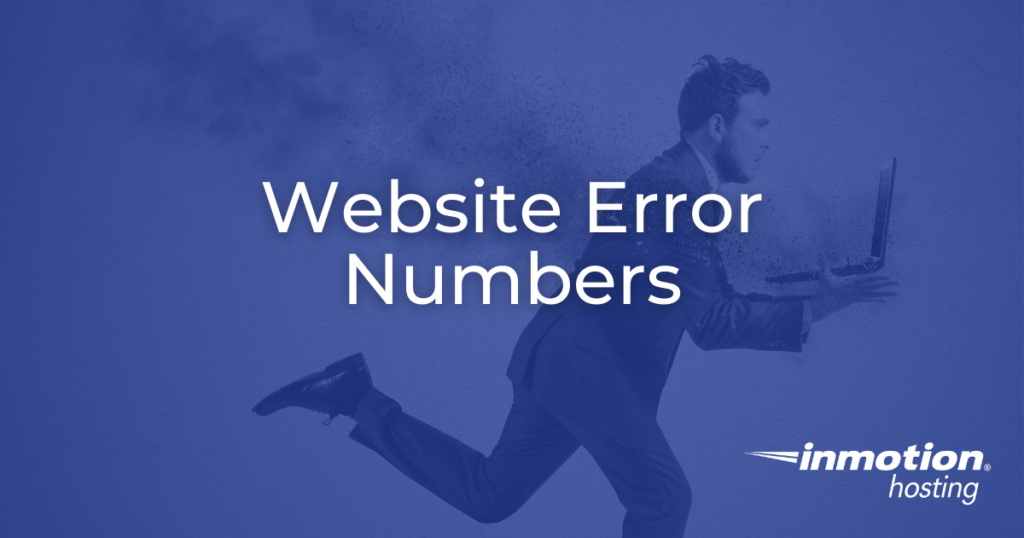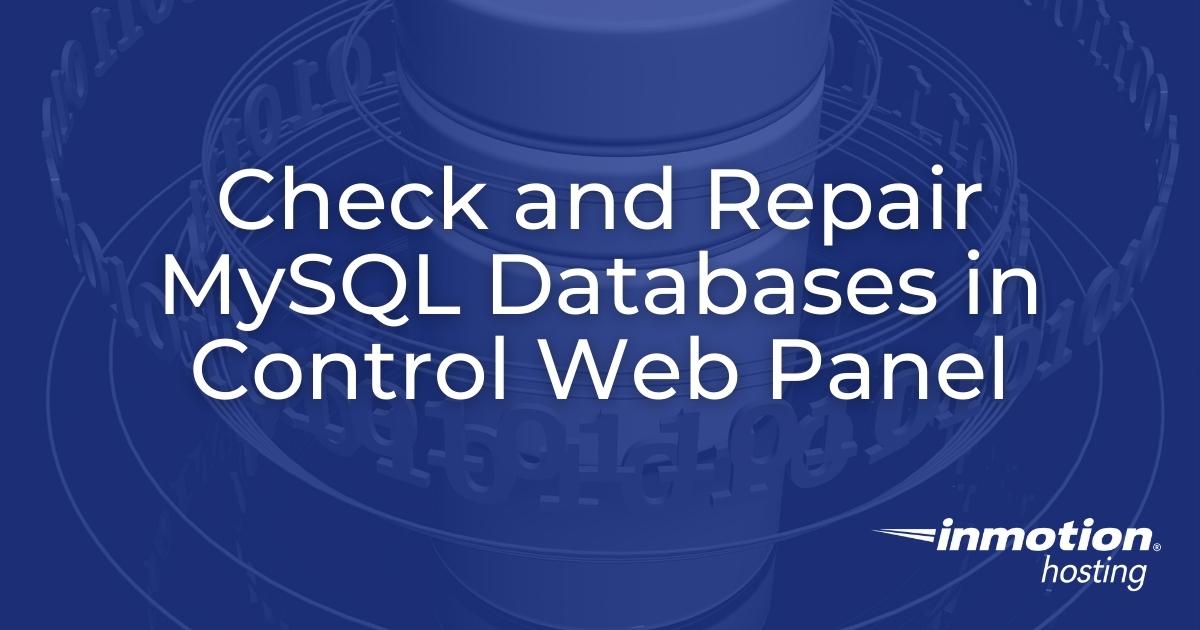Keyword density measures how many times you use a keyword in a piece of content compared to the total amount of words on that page. In the Yoast SEO plugin, this is known as keyphrase density. In this article, we will show you how to find and manage your keyphrase density using Yoast SEO. How Read More >
Search Results for: wordpress plugin
How to Repair MySQL Databases in Control Web Panel (CWP)
As flexible as dynamically generated sites are, they aren’t without potential issues. There’s bound to be an instance of database corruption at some point between web server requests and complex PHP executions. This is why it is important to know how to repair MySQL databases on your Control Web Panel (CWP) server. We’ll also cover Read More >
Rank Math: How to Add Title Tags
Writing good title tags is an important part of your SEO strategy, and thanks to awesome SEO plugins like Rank Math, it is easy to add and edit title tags directly in WordPress. In this article, we will cover how to add title tags using the Rank Math plugin. How to Set Title Tags in Read More >
How Secure is Control Web Panel (CWP)?
Asking “how secure is Control Web Panel (CWP)?” is important when considering a web hosting panel. It’s easy to simply say CWP is pretty secure for up to small and medium-sized businesses. But the best answer is that it depends on whether you: It’s even more relevant when you realize that CWP, even when it Read More >
Crawling, Indexing, and SEO
Crawling and indexing are how Google explores and makes sense of your website, and it can have a big effect on your site’s SEO. In this article, we will explain what crawling and indexing are, what affects your site’s crawlability and indexability, and what you can do to improve both. What is Crawling? What is Read More >
Meta Descriptions and SEO
Meta descriptions give you an opportunity to introduce yourself to potential customers. They are one of the first chances you have to convince searchers your link is worth clicking on. In this article, we’ll cover what they are, why they matter, and what you can do to write high-quality meta descriptions. What is a Meta Description? Read More >
How to Create a Photo Gallery Using the Query Loop Block
The query loop block can be used to make a gallery, but be aware that its primary purpose is to sort posts, not images. The query loop block is one of the primary elements that the full site editing system is built on. Using the filter option of the query loop block can be used Read More >
How To Check If Your Site Needs Persistent Object Cache
In this article, you will learn about a special type of web storage system known as a persistent object cache. It’s a way to store frequently requested parts of your site as “objects” that can be quickly recalled from system memory to save on resource usage. Read on to learn more and how to find Read More >
How to Clear Your Browser Cache for Major Browsers
In this article: The browser cache is a storage area that contains saved web files from the websites you’ve visited. Usually, this is a good thing because it decreases the load time for websites you visit by eliminating the need to re-download web elements every time you visit. For example, elements like a logo, an Read More >
Managing Organizational Units in Google Workspace
One of the ways Google Workspace helps you keep track of your users and devices is through the use of organizational units. By default, Google Workspace places all users and devices in the top-level organizational unit, so any changes made in the admin console will affect all users in that top-level unit. To further customize Read More >
How to Create Groups on Google Workspace
A popular feature of Google Workspace is the ability to create lists of users for the purpose of team communication and collaboration. These lists of users are called Groups and can be used in a variety of ways. In this article we will outline how to create Groups on Google Workspace and discuss some of Read More >
How to Create a Mastodon Account
If you want to join a Fediverse application, the best way to start is probably with a Mastodon account. The Mastodon social network is active and organized enough for you to find a community that best shares your interests. The microblogging platform also makes a good choice for private remote team communications. Below we’ll cover Read More >
Install Mastodon Social Media App on Ubuntu 18.04
The Mastodon social media application is a self-hosted Twitter alternative you can use to communicate with a private community or the Fediverse. Mastodon requires a Linux Ubuntu server (version 18.04 or greater). We recommend using a clean operating system (OS) image if possible as the Mastodon installation process requires many dependencies including PostgreSQL, Ruby, and Read More >
Gutenberg 12.3 Block Additions
The built-in display editor continues its parallel development with updates in the standalone plugin named Gutenberg. Currently, at version 12.3, the Gutenberg plugin introduces new features and changes that are eventually integrated into the default visual editor for WordPress. There are 3 new blocks in the current release; Site Logo, Post Author, and Group Block Read More >
Trellis: A Theme Framework For Passing Core Web Vitals
With Google’s Core Web Vitals now having an impact on where websites and pages rank in the search results, it is more important than ever to perform well in each category. Enter Trellis. Trellis is a WordPress theme framework designed to optimize ad performance and pass Google’s Core Web Vitals (CWVs) while simultaneously preserving page Read More >
How to Enable Gzip Compression in Joomla 4
Let’s take a look at the basics of enabling gzip compression on a Joomla 4 site. The What and Why of Gzip Enable Joomla 4 Gzip Compression What Sites Benefit the Most from Gzip Compression The What and Why of Gzip Gzip is simply another way to compress your data. If you’ve ever extracted files Read More >
Working with the Navigation Block in Gutenberg 11.5
Gutenberg is not only the name of the visual editor that’s been integrated into WordPress since version 5.0, it is also the name of the plugin that is used to test and become familiar with the new features being introduced into the editor. One of the newest features introduced in version 11.5 of the Gutenberg Read More >
How to Create Estimates with Sprout Invoices
When you create estimates with Sprout Invoices you give your customer or potential customer a quote on the cost of your services or product that you wish for them to purchase. It is easy to quickly create estimates with Sprout Invoices. It includes the option to add all of your costs in detail along with Read More >
Do You Need Managed Hosting For Cloud Email Delivery?
We often hear issues and field questions about email configuration. In the a managed VPS (also known as VPS cPanel hosting), you have email set up by default, and you can configured email settings in your app using those provided to you at account sign-up. But what if you have a non-cPanel cloud VPS, and Read More >

Reasons for the Error
Errors occur for many reasons. They can happen due to changes with versions of software, user input errors, security issues, internet problems, etc. An error message is a negative event, but you should take the issue and use the error to help you improve or understand your application or website. Quite often, these problems may not have been initially recognized. Solutions for these problems give you a better application or website.
Common issues include website errors, email errors, and application errors. Recognizing and reporting these messages will help your support personnel or developers resolve issues quickly.
Website Errors
Website errors can be anything from 500 errors to 404 errors indicating that a page can’t be found. You can also set custom errors so that they’re more informative when they appear.
Application Errors
Some very popular applications used for websites include WordPress, Joomla, and Moodle. There are also many other applications used in support of a website including eCommerce software, FTP clients, email clients, and billing software like WHMCS. The error messages produced by these applications are all important and provide valuable clues to resolving existing issues.
- Fixing WordPress Redirect Errors
- Fix WordPress Fatal error: Allowed memory size exhausted
- Fix WordPress Download Failed Errors on Update
- Joomla Error – Plugin Uninstall: Folder field empty, cannot remove files
- 500 Error when using the User Manager after Upgrading to Joomla 2.5
- Joomla 1.6 – Media Manager Not Uploading Error
- Troubleshooting FileZilla Error Logs
- “550 Invalid address” email error
- SMTP and ESMTP Error Code List
- 404 Error occurs in PrestaShop 1.5 login
- WHMCS Error – Order Cannot Be Created
- How to Fix the 550 No Such User Here Email Err
Server Errors
Like application errors, application errors can involve a variety of possible causes. Very common errors from database or web server configuration issues. Servers are often misconstrued as problems with the physical server. In most cases, it is more related to the software running on the server.
Problems with emails are often diagnosed at the server level, but knowing the error message being declared is important to help with resolving the issue.
- MySQL 1064 Error: You have an error in your SQL syntax
- MySQL – 1044 Access Denied Error Message
- How to Fix the Insecure SSL Error due to SHA-1 Deprecation
- How to view cPanel Error logs
- Dealing with Database Errors in PHP-Fusion
- Explaining the Max_User_Connections Error
- Email Error 450
- Email Error 421
- 554 Email Error
Website error messages are commonly regarded with disappointment and irritation. However, they are tools for helping you identify and resolve issues that can help you improve your website or web-based application.

